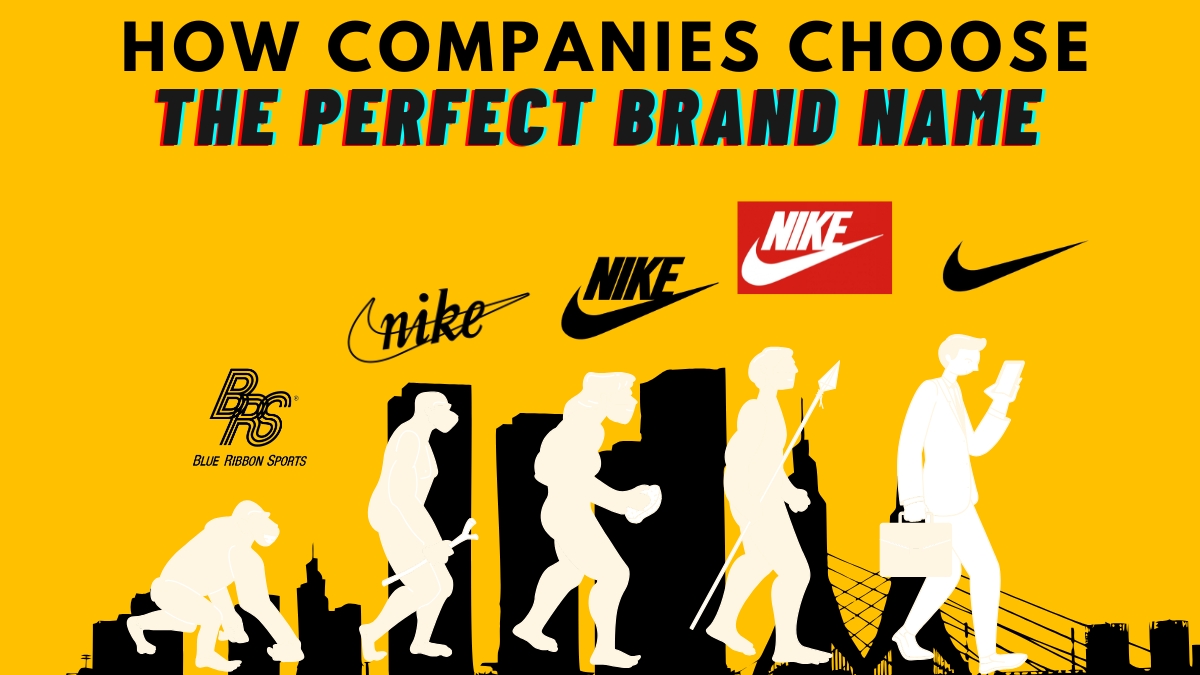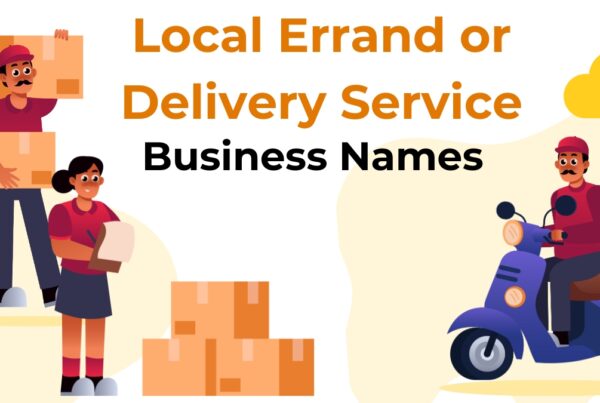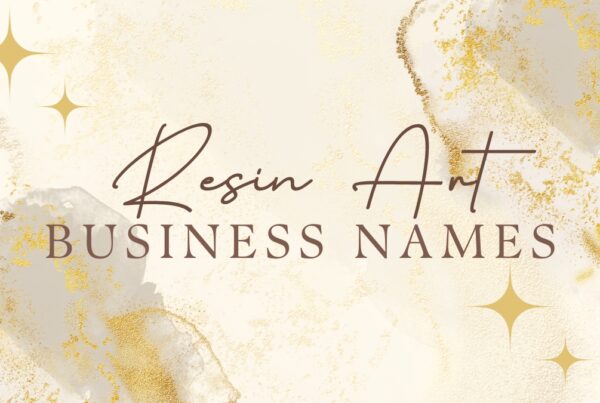Why Do Brand Names Matter So Much?
Picture this: you’re walking along the road. You notice two signs: one reads “Best Burger Place,” while the other features a stylish logo and says “ZingBurger.” Which one are you more likely to remember?
It’s probably ZingBurger, am I right?
That’s the power of a brand name.
Brand names are important because they are the first thing people see or hear about a business. They create a feeling or an image in your mind. A good brand name can make people feel excited, happy, curious, or even safe.
Names Help People Remember
If a name is short, catchy, or fun to say, people are more likely to remember it. Think about names like:
- Nike
- TikTok
- M&M’s
These are all easy to say and stick in your head. If people remember your name, they’ll come back to your product or talk about it with others.
Names Create a First Impression
When you meet someone new, the first thing you usually learn is their name. Companies are no different. A brand name is like the company’s “hello.” It helps people decide if they want to learn more or walk away.
Would you trust a bank called FastCashCrazyFunTime? Probably not.
But a name like SecureTrust Bank sounds more serious and reliable, right?
Names Show Personality
Every company has a unique personality, much like people do! Some are enjoyable and friendly, such as In-N-Out Burger. Some are smart and professional, such as Microsoft. The name can give a hint about what the company is like.
For example:
- Lush sounds fancy and fresh — perfect for a beauty brand.
- Tough Mudder sounds strong and wild — great for an obstacle race.
The name tells you what kind of experience to expect.
Names Can Build Loyalty
If a brand name makes you feel good, you’ll want to remain loyal to it. For this reason, a lot of people wear branded clothing or consume the same soft drink on every occasion. They experience a connection to the brand, and it begins with the name.
Think of fans who love:
- Apple over other tech brands
- Adidas over other sneakers
- Starbucks over other coffee shops
The name becomes part of their identity — even if they don’t realize it!
Names Help in Marketing
A good name can make a brand easier to advertise. It looks good on signs, it sounds nice in a commercial, and it works well in hashtags or social media posts.
Imagine if YouTube was called Online Video Posting Service. That would be way harder to fit into a catchy ad or a song, right?
Let’s break it down even more:
How Do Companies Come Up With Names?
You might think naming a company is as easy as picking your favorite word or using your pet’s name. But for big companies, naming a brand is a big deal. They don’t just choose a name because it “sounds cool” (though that helps). They follow a full process that can take weeks or even months!
Let’s take a closer look at how companies find the perfect name for their brand.
Companies usually follow steps like these:
Step 1: What’s the Brand All About?
Before a company can pick a name, they need to know what they are and who they’re for.
They ask questions like:
- What do we do?
- Who is this for?
- What do we want people to feel?
For example, if a company sells toys for kids, the name might be silly or playful. But if it’s a law firm, the name probably needs to sound serious and professional.
A name like “BoomPop Toys” sounds fun. A name like “Stone & Gray Law Offices” sounds serious. That’s on purpose!
If the brand is about fast delivery, the name might sound speedy. If it’s about being safe, the name might sound calm or serious.
Step 2: Brainstorm a TON of Ideas
Once they know what the brand stands for, it’s time to get creative!
This part is kind of like a giant name game. Teams of people sit down and write down every possible idea they can think of. Some names are weird. Some are boring. Some are amazing. But no idea is too silly to write down.
Here are some ways they come up with names:
- Made-up words (like Pepsi or Google)
- Simple real words (like Amazon or Target)
- Words from other languages (like LEGO, from Danish words “leg godt” meaning “play well”)
- Names of people (like Ford, after Henry Ford)
- Real words: like Amazon, Target, or Forever 21
- Made-up words: like Verizon or Kodak
- Mash-ups: like Microsoft (microcomputer + software) or Netflix (internet + flicks)
- Foreign words: like LEGO, which comes from the Danish “leg godt” (means “play well”)
- Names of people: like Ford (after Henry Ford) or Disney (after Walt Disney)
- Nicknames or abbreviations: like IKEA (based on the founder’s name and hometown)
They look for names that sound good, look cool, and feel right.
Step 3: Make Sure the Name Isn’t Taken
Imagine naming your new company “SpeedySocks”… only to find out that someone else already owns that name!
That’s why companies must do a lot of checking. They look at:
- Trademarks (a legal way to protect names and logos)
- Websites (is the name.com already taken?)
- Social media handles (can they get the name on Instagram, Twitter, TikTok, etc.?)
- Other countries (some names mean weird or bad things in different languages!)
If someone else already owns the name, they have to cross it off the list and try again. No one wants a legal battle over socks.
Step 4: Say It Out Loud. A LOT.
Now they start testing names to see how they sound, look, and feel. This part is fun — and super important!
They might ask:
- Can people spell it?
- Can people say it?
- Do people like it?
- Does it mean something weird in other languages?
- Will people remember it?
- Does it make sense for what we’re selling?
Step 5: Pick a Winner!
After all the work — brainstorming, checking, testing — it’s time to pick the best name.
The name needs to be:
- Unique
- Easy to remember
- Easy to say
- Connected to the brand’s message
- Legally available
Sometimes they also design logos or slogans to go with the name so everything feels like one big idea. Once they choose the name, it becomes the face of the company!
For example, a car named “Nova” didn’t sell well in Spanish-speaking countries. Why? Because “No va” in Spanish means “it doesn’t go”! Oops.
What Makes a Great Brand Name?
Have you ever heard a brand name that just stuck in your head?
Maybe something like:
- YouTube
- Oreo
- Lego
- Xbox
- Nike
Why are those names so memorable and fun? What makes them great?
Well, believe it or not, creating a successful brand name needs a lot of thought. It’s not only about being cool, it’s also about being intelligent, straightforward, and easy to love.
It’s Easy to Say
A great brand name should roll off the tongue. That means it should be easy to say out loud and not tricky to pronounce.
Imagine trying to tell your friend about your new favorite snack, but the name is “Blxzzphk Crunch.” You’d be like, “Umm… what?”
Names like Skittles, Zoom, or Sprite are easy to say — even for kids — and that makes people like them more.
It’s Easy to Spell
Have you ever tried to search for something but couldn’t spell it?
That’s why spelling matters! A good brand name should be easy enough to write without having to ask, “Wait… is that with one ‘r’ or two?”
Great examples are:
- Pepsi
- Lego
It’s Easy to Remember
A great brand name sticks in your brain like bubblegum.
It might sound fun, rhyme, or be super short. These kinds of names are easy to remember and repeat.
Like:
- Zoom (sounds fast!)
- TikTok (rhymes and sounds like a clock!)
- Nike (just one word — and famous!)
It Tells a Story or Gives a Feeling
Some names are more than just letters, they make you feel something.
- Coca-Cola sounds fizzy and fun.
- Instagram makes you think of instant photos.
- Amazon sounds big and powerful (just like the Amazon rainforest!).
It’s Different From Everyone Else
A great brand name shouldn’t sound like a copy of another name.
Imagine if there were two companies called:
- FaceFriends
- SnapGram
They sound a little too much like Facebook and Instagram, right?
Good brand names stand on their own. They’re unique. They don’t get mixed up with someone else.
That’s why names like:
- Etsy
- Reddit … are so powerful. There’s nothing else like them!
It Works Well Online
These days, a brand name has to look good on websites, apps, and social media.
So it helps if:
- The name is short (so it fits in a username)
- The website name (called a domain) is available
- The name doesn’t already belong to someone else
Would you want a brand name that’s already being used on Instagram by a pet hamster in Canada? Nope.
It Doesn’t Mean Something Weird in Another Language
This one is SUPER important.
Sometimes, a brand name sounds great in one country… but means something silly, gross, or offensive somewhere else!
For example:
- A car called the Chevy Nova didn’t sell well in Spanish-speaking countries because “No va” means “doesn’t go.” Oops.
That’s why big companies always check what their name means around the world. A great name should be safe and friendly everywhere.
It Can Grow With the Company
A great brand name should still work even if the company changes a little.
What if your company starts out selling books but later adds toys, games, and more?
If you named it OnlyBooks, it might feel too small later.
But a name like Amazon can grow into anything — books, groceries, cloud storage, and more!
That’s why many great names are flexible. They don’t lock the company into just one thing.
It Has a Good Sound or Rhythm
Some brand names are just fun to say. They have rhythm, sound bouncy, or use letters in a cool way.
Like:
- Kit Kat
- PayPal
- Coco Chanel
These names are catchy and feel good in your mouth. That might sound silly, but it makes people enjoy saying and hearing them more often!
It Has Meaning (But Not Always)
Some names tell you what the company does. For example:
- YouTube = You + TV/video
- Facebook = Faces + social profiles
- Post-it = You stick notes (like a post)
But sometimes, a name doesn’t mean anything at first — and that’s okay!
Think about:
- Google (just a made-up word at first!)
- Nike (based on the Greek goddess of victory)
- Zappos (comes from the Spanish word for “shoes” – zapatos)
What matters is that the name feels right and can grow into something people trust and love.
Cool Tricks Companies Use When Naming
Companies sometimes use creative tricks to make their names catchier:
Mashup Words
- Microsoft = “Microcomputer” + “Software”
- Netflix = “Internet” (Net) + “Movies” (Flix)
Use Made-Up Words
- Kodak doesn’t mean anything, but it sounds bold and cool.
- Zappos is a twist on “zapatos,” the Spanish word for shoes.
Misspell on Purpose
- Flickr dropped the “e” in “flicker”
- Lyft replaced “i” with “y” to sound fun
These names are easier to trademark and stand out more.
Famous Brand Name Changes
Sometimes, companies start with one name, then change it to something better.
- Backrub became Google
- Blue Ribbon Sports became Nike
- Jerry’s Guide to the World Wide Web became Yahoo!
Why the change? Usually, because the new name is shorter, cooler, or easier to remember.
What Happens If the Name Is Bad?
A bad brand name can lead to:
- Confusion (if it sounds like other companies)
- Embarrassment (if it means something bad in another language)
- Lack of interest (if it’s boring or hard to say)
That’s why companies work super hard to avoid name mistakes.
Fun Fact: Naming Experts Exist!
There are professional naming agencies that help companies name things. These experts use:
- Psychology (what sounds happy, strong, or exciting?)
- Language skills (what works across the world?)
- Marketing knowledge (what sticks in your brain?)
These agencies can charge thousands of dollars just to come up with one name!
Can You Create Your Own Brand Name?
Absolutely! Here’s how you can try:
- Think about what your brand does
- Write words that match how you want people to feel
- Mix and match words or make new ones
- Say them out loud — do they sound fun or cool?
- Ask friends what they think!
You might come up with something even better than the big companies!
Final Thoughts: What Makes a Great Brand Name?
A great brand name isn’t just a word. It’s a feeling, a first impression, and a memory all in one.
It should be:
- Easy to say
- Easy to spell
- Easy to remember
- Unique
- Fun or meaningful
- Internet-friendly
- Able to grow with the brand
When you need to come up with a name for your own project, be it a YouTube channel, a school team, a new toy, or even an imaginary company. Try to adopt the mindset of the professionals.
Ask yourself:
- “Will I remember this name a week from now?”
- “Would I be proud to tell my friends this name?”
- “Does this name make people feel something good?”
If yes, you might have a great brand name on your hands!
Curious how some of the world’s most iconic brand names came to be? Don’t miss our next article: The Fascinating Origins of Famous Brand Names — you’ll be surprised at the stories, inspirations, and happy accidents behind names you hear every day.




